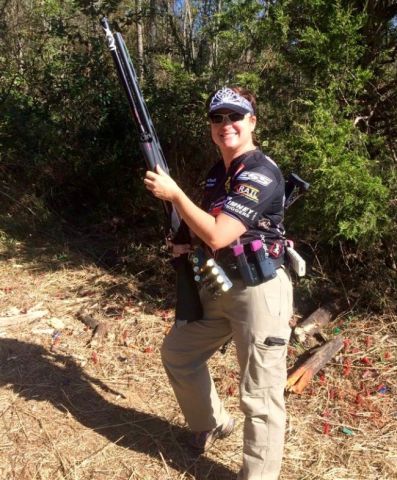People who participate in 3-Gun matches are dedicated to their sport. They invest a significant amount of money in their equipment to compete. As a non-competitive shooter, getting started in any competition is an intimidating experience. Apprehension is the result of not understanding the equipment needs and various divisions, scoring and rules of matches.
Equipment needs
When looking into the equipment needs for participating in a 3-Gun match, I realized this is probably one of the most equipment-intensive shooting sports in existence. This obviously has to do with the fact that the sport involves 3 guns, and each gun has its own unique equipment needs. Unless new shooters are able to borrow equipment, they’ll have to purchase some of it. The prices on equipment vary greatly. If the shooter is simply interested in competing for leisure, lower-end equipment can be purchased or borrowed. For those shooters who believe they will be seriously competing, they may want to invest in higher-quality weapons and gear.
The basic gear that is needed to participate in a 3-Gun match includes:
There are a variety of accessories that can be incorporated to improve performance. These accessories can be quite expensive and can range from competition triggers, to extended magazine tubes and sidesaddle ammunition pouches for the shotgun, to an extended charging handle for the rifle. Each of these accessories serves to increase speed during competition.

Michelle Cerino and her 3-Gun get-up.
Many firearm manufacturers recognize the growing interest in 3-Gun competitions and are selling firearms that already incorporate some add-ons that will improve performance. The benefit of purchasing such a firearm is that an established competitor in the sport generally developed it, so the best components are used. Purchasing a competition-ready firearm also prevents users from buying an accessory that is incompatible with the firearm they possess. And the best part about buying a firearm with the accessories already intact is that someone with the knowledge, skill and ability to safely install those parts, did. Regardless of the equipment acquired, whether it is borrowed, low end or competition ready out of the box, the next step is to have a basic understanding of 3-Gun competition.
Divisions, scoring and rules
The various divisions within 3-Gun competitions equate to the setup of your firearms. Below is a very basic description of the divisions and should be further researched before determining a classification:
Scoring in a 3-Gun competition is a combination of time and accuracy. Penalties count against shooters and include the following reasons: a failure to engage, hitting a no-hit target and failing to neutralize a target. Each of these failures adds additional seconds to the overall time and diminishs the shooter’s score. The ability to balance speed and accuracy is the overall goal for every shooter. If a shooter shoots very slow but accurate, or vary fast and inaccurate, both methods will result in poor scores. The spirit of any action-shooting sport is to find the speed at which you can maintain control, while simultaneously being on the verge of losing control, and all the while maintaining some semblance of accuracy. This is what induces adrenaline into the sport.
The rules for 3-Gun matches vary from competition to competition. In an effort to find a basic set of rules, I was only able to find was a link that lists the rules for major competitions. The best way to get a feel for the rules is to go to a club where you intend to shoot a match and get a copy of their rules. The best way to get a feel for competing is to watch a match and then compete.
Those who choose to compete in 3-Gun matches need to be prepared for the equipment-intensive requirements that come along with competition. Remember that the only rules that really matter are those of safe gun handling. Violating certain match rules could result in disqualification, but violating safe gun handling rules may result in serious injury or death. So be safe and have fun!